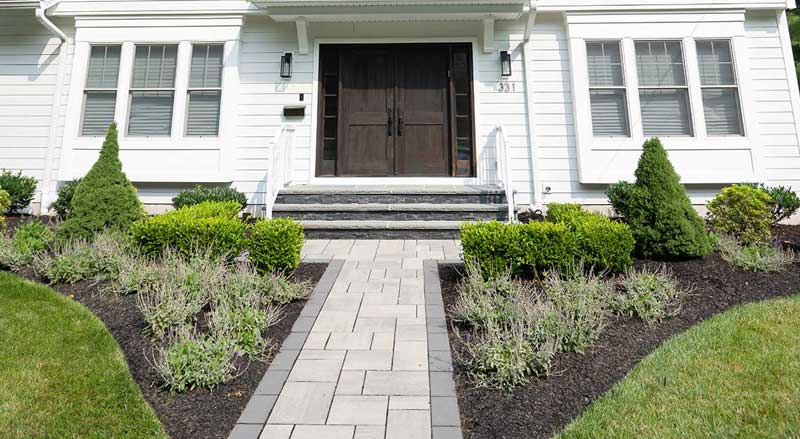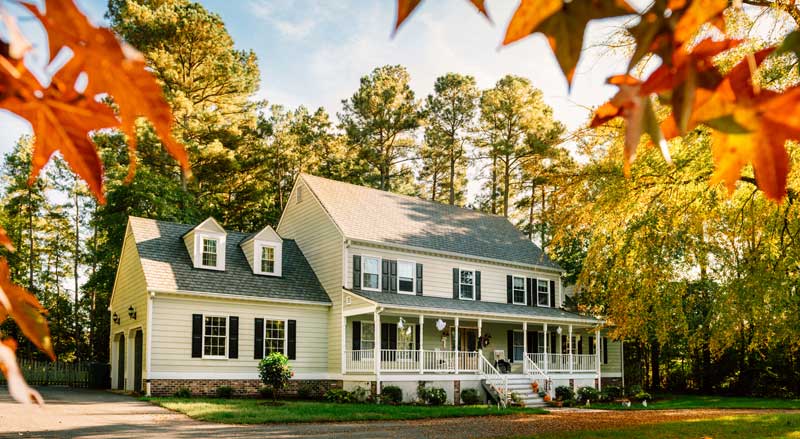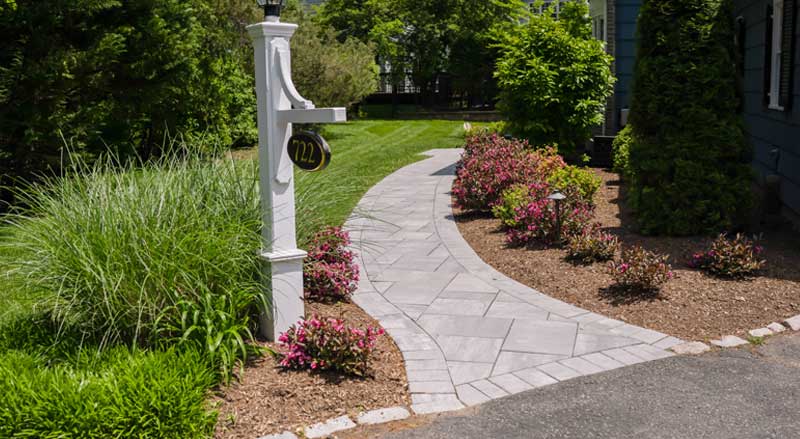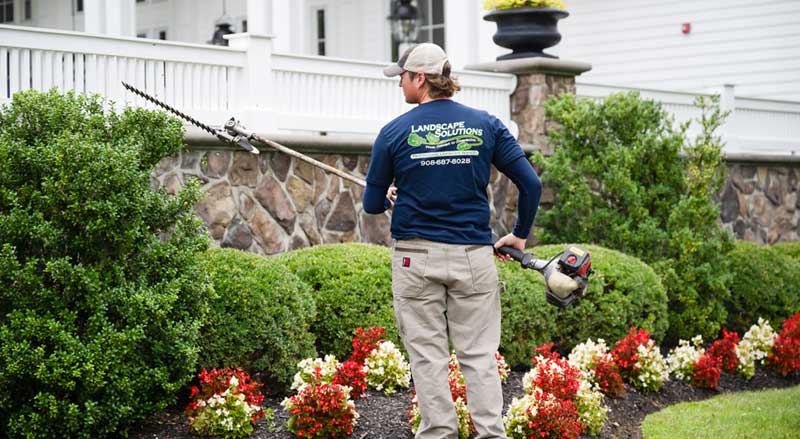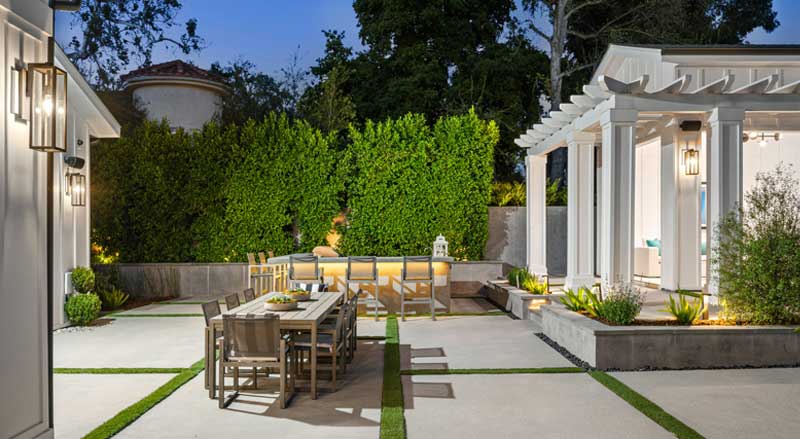Incorporating hardscaping into your landscape design can increase your home’s visual appeal and make your property more environmentally friendly. Here you will learn the aesthetic and practical advantages of using stone and rocks in your landscape.
Let Hardscaping Enhance Your Garden
Hardscaping is the term in landscape architecture that describes the creation of outdoor elements using non-living materials. Landscape designers often use natural stone to make a landscape renovation:
- More attractive and visually interesting
- More durable
- Easier to maintain
- Environmentally friendly
Knowledgeable use of rocks and stones in landscape design will artfully:
- Add additional color
- Introduce new textures
- Create a focal point
- Ensure year-round interest in your garden
Learn more about landscape hardscaping and softscaping.
Stones, Rocks, and Boulders
Do you know the difference between rocks, stones and boulders? Each of these items has different uses in landscaping.
Following, we define each element clearly and show some practical and beautiful ways to use them in your yard.
Stones
Stones are smaller than rocks, measuring not much larger than 2” in length. Water, wind, and sand have smoothed stones over a long period. These natural stones are extremely durable and can easily withstand harsh weather elements.
River Rock

Landscape designers commonly use river rock for both its function and design. The stones are smooth, round, and attractive. They come in a variety of sizes and colors, including:
- Black
- White
- Tan
- Blue
- Pink
- Grey
River rocks’ smooth shapes make them comfortable and safe to use as garden paths and walkways.
River rocks are also used to prevent erosion or direct water away from homes or other structures.
Pea Gravel
Pea gravel is made up of small, rounded rocks—each measuring about 3/8” in length.
Landscapers commonly use it in:
- Playgrounds
- Paths and walkways
- Dog runs
- Gardens, as mulch
Crushed Stone
Crushed stones are angular and usually measure about 1” long. They are often made of granite that was crushed by machines.
Crushed stones can:
- Replace mulch
- Act as a base under a walkway or patio
- Attractively improve drainage in areas of your yard
Using stone mulch can be cost-effective and easier to maintain than organic mulch. However, don’t use stone mulch around drought-sensitive or young plants since it retains heat.
Rocks
Rocks have been broken off of larger natural masses. They are found at excavation sites and farms.
Flagstone and Bluestone
Flagstone is a sedimentary rock made of sandstone and natural minerals. Companies quarry it in slabs and usually cut the rock into squares or rectangles. Flagstone easily absorbs water and comes in several colors including blue, tan, brown, and gray.
Bluestone is a specific type of dense flagstone. It is popular in hardscaping because it can better stand up to destructive weather.
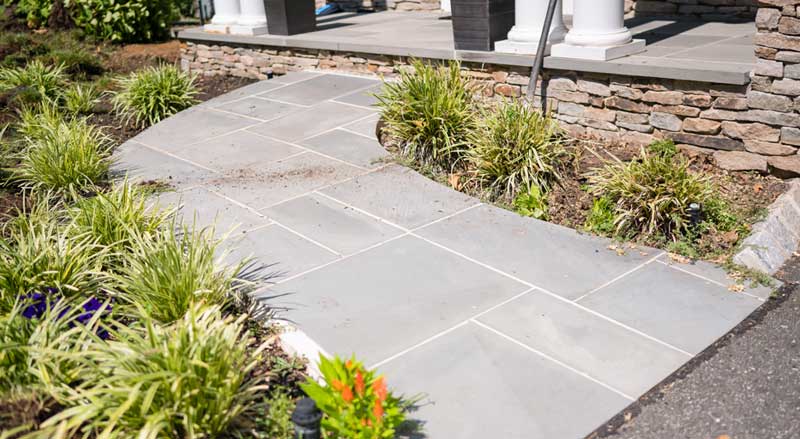
You can purchase flagstone pieces with uniform thickness and shapes. This makes it ideal for creating:
- Paths and walkways
- Stairs
- Garden walls
- Patios
- Pool decks
Fieldstone
Fieldstone is a rock that’s found close to the earth’s surface. It is not as flat as flagstone, has a rougher texture, and comes in varying organic shapes.
Fieldstone’s composition, often granite, limestone, and sandstone, determines its color.
Colors of fieldstone include:
- Tan
- Brown
- Gray
- Red
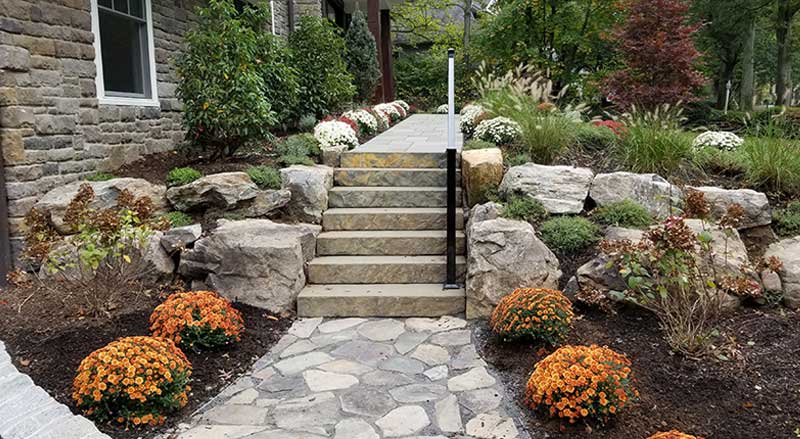
Fieldstone provides aesthetic appeal to many hardscaping projects. It is used to create more natural-looking:
- Pathways
- Firepits
- Stone walls
- Retaining walls
- Walkway borders
Boulders
A landscaping boulder refers to any rock that measures over 16” in diameter. Boulders have smoothed edges created by wind, rain, and sand.
Boulders can be an exciting component of landscape design.
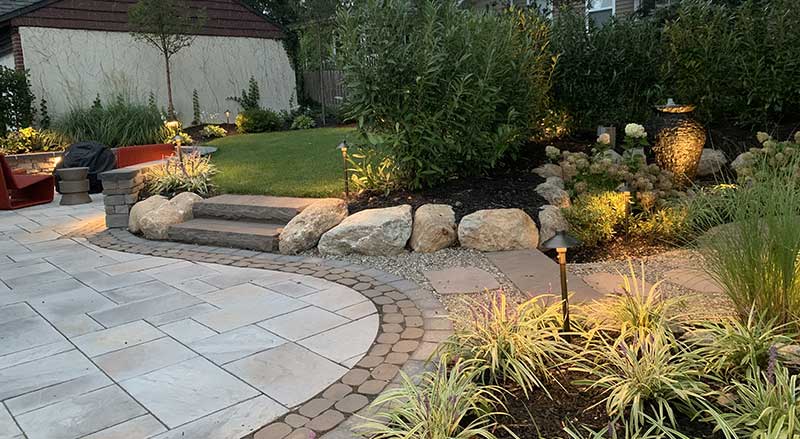
Use boulders to:
- Create a focal point
- Create extra seating
- Enhance a water feature
- Build a retaining wall
- Create a tiered landscape
- Add interest
Proper use of boulders can make your property look more cohesive, inviting, and welcoming. They also offer a comforting feeling of permanence.
Boulders can be expensive to purchase. They are also expensive to have delivered and installed on your property. Nevertheless, this is a job best left to your landscape company. A three-foot boulder can weigh upwards of 1,800 pounds!
Professional placement of rocks and boulders also makes them more secure and safer in your landscape.
More Ways to Use Stones, Rocks, and Boulders in Your Landscape
Lawn Edgings
Use stones to edge garden paths or line a driveway. They can keep grass from growing the walkway. They also keep smaller stones, and mulch, in their proper place.
In Planters
Place small, decorative stones in your planter containers to add texture and interest to potted succulents.
Taming Difficult Topography
Rocks and boulders in landscape design can correct difficult topography problems.
For example, Summit, Madison, and Livingston are all beautiful New Jersey towns that have some homes built on sloping properties. Many homeowners have found that tiered levels, created using stones and boulders, have allowed them to enjoy functional and spacious backyards despite their challenging landscapes.
Retaining Wall
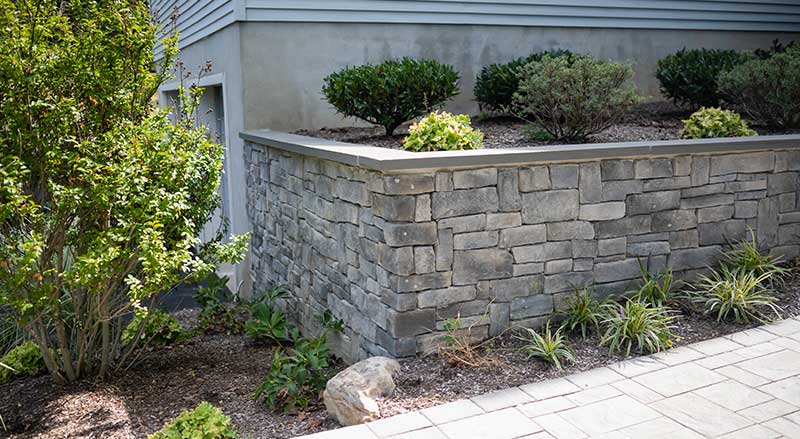
A stone retaining wall is not only attractive—it’s also functional. It can stop erosion caused by harsh weather as well as create different areas on your property.
Create or Enhance a Water Feature

If your property has a water feature, such as a small lake or fountain, use stones to define, enhance, and contain the area naturally.
Additionally, use rocks in your garden to create:
- A raised flowerbed
- A peaceful and low-maintenance rock garden
Do This First
Before you purchase any rocks or boulders, think about how your garden will look year-round. In the summer, rocks and boulders will easily blend with the landscape. But in the winter, when many trees, plants, and grasses are dormant, rocks and boulders can take on an uncomfortable, out-of-place appearance.
You never want these items to look like they were “placed” onto your landscape. Landscape professionals know how to install boulders, so they look as though they naturally belong in your yard.
Other Hardscaping Materials
These additional hardscaping materials are also used to create terraces, walkways, paths, retaining walls, and more.
They include:
- Pavers
- Granite and other natural stone
- Concrete
- Brick
- Wood
Landscape Solutions, your New Jersey landscaper, offers comprehensive landscaping and hardscaping services. Contact us today for a more beautiful, functional, and enjoyable outdoor space.


